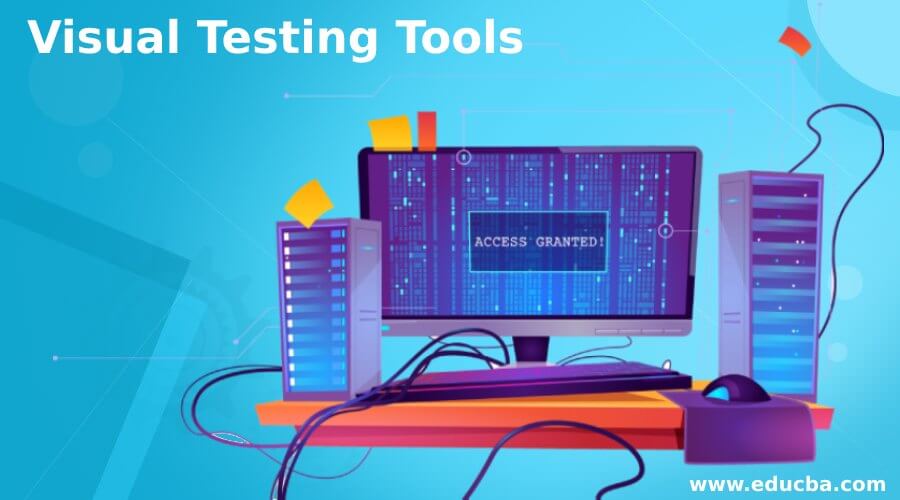
Introduction to Visual Testing
The following article provides an outline for Visual Testing Tools. Visual tests ensure that no previously successful changes to the software break anything. The visual regressional test ensures that problems of any style do not appear when software changes are made. The request should remain as good as it was. A screenshot of the current UI is captured and compared with an original screenshot in the visual regression testing tool. The visual regression tests, therefore, look at the differences in history. It confirms that, even after code modifications, the web page still provides the expectations across various browsers.
List of Visual Testing Tools
Given below is the list of Visual Testing Tools:
1. Selenium
As an open-source platform, selenium supports several languages, including Python, Java, PHP, JavaScript, C#, Ruby, and Perl. The tool can communicate directly with a browser to automate the testing with a limited but valuable prototype plug-in, the Selenium IDE, that allows actions to be recorded and used for future testing references. The tool has gained massive support and an active community on the market for over a decade. It allows simultaneous testing on various browsers on various machines and reduces the time required to test valuable and major projects.
2. Gemini
The tool has gained massive support and an active community on the market for over a decade. It allows simultaneous testing on various browsers on various machines and reduces the time required to test valuable and significant projects.
3. Watir
Although Watir works only on Windows and is limited to web apps, giants such as Slack and Yahoo, use Watir. It can perform simple and easy-to-perform open-source and basic testing. One of the very few scripts in the language of programming is Ruby. However, if Ruby is not your preferred language, you can also write .NET or Java. It can only be used in combination with other tools to be basic and simple.
4. Jest
This tool is very easy to configure and set up when you work on automated unit testing for your developer. Jest provides features such as an interactive watch mode to improve workflows. In addition, it is clever enough to test the changes made to your code repository since your last commit. The failing test may also be executed first in the preceding run, which enables changes needed to fix the tests.
5. Storybook
A storybook is an easy-to-use tool for constructing a library of visual components, allowing you to browse a library of components, view the various states of each component, and develop and test components. In addition, it allows you to visually regress all components using the visual validation test tools provided.
6. Nightwatch
Nightwatch.js is a full-scale testing solution in Node.js for browser-based applications and websites. It’s a simple but powerful syntax allows you to quickly write tests with JavaScript (Node.js) and CSS or the Xpath selectors only. A flexible command and assertion framework facilitates the implementation of custom commands and assertions by developers in your application. It performs tests sequentially and parallelly by group, tag, or individual in various combinations.
7. WebdriverCSS
Similar to Gemini, Selenium is dependent on WebdriverCSS for its features. As part of the WebdriverIO ecosystem, it enhances the main framework and offers an improved experience. Integrating with other applications such as Jasmine, Mocha, and Cucumber is also possible. Js
8. GreenOnion
GreenOnion helps solve regression bug problems and the tests between developers and devs of the problem of HTML and CSS problems. It also helps you to track the presentation layer BDD and TDD. Finally, GreenOnion helps you obtain the same front-end test results you enjoyed up-to-date in your unit and integration tests.
9. Wraith-Selenium
The developer of BBC News developed the original Wraith to compare screenshot websites using a headless browser. For screenshots of different environments, the Wraith Selenium uses SlimerJS or PhantomJS and produces the differences between the two images highlighted in blue.
10. BaskstopJS
BackstopJS automates your reactive web-based visual regression testing over time by comparing DOM screenshots. A good starting point for BackstopJs would be an article on automating the CSS regression tests by css-tricks.
11. Selenium Visual Diff
Selenium Visual Diff aims to integrate better screenshots that take functional tests, storage, and versioning of scrubbers performed in maven selenium2 so that visual differences between the two application versions are reported.
Conclusion
It seems sufficient as a list to give you an idea about tools that your development team might want to know. Then, you can choose any of them based on your requirements.
Recommended Articles
This is a guide to Visual Testing Tools. Here we discuss the introduction and the list of visual testing tools for better understanding. You may also have a look at the following articles to learn more –

